Bessie and Roxey
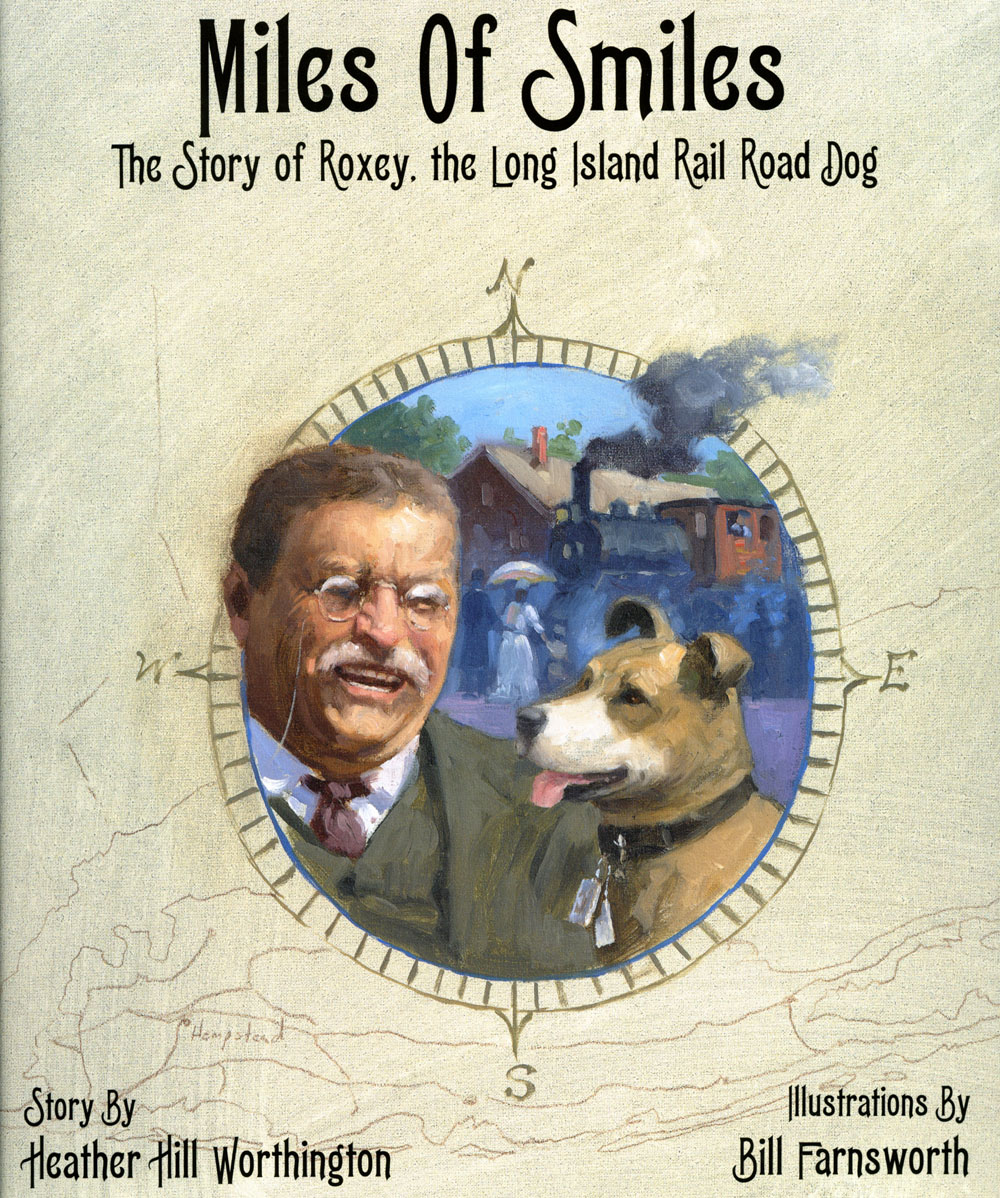
Two things children love are dogs and trains. This idea inspired Heather Hill Worthington, a children’s books author, to write a story about a dog named Roxey — a dog who was a mascot on the Long Island Rail Road between 1901 and 1914. Naturally, a children’s book needs illustrations to captivate a young person’s mind.
Worthington contacted me — a Long Island Rail Road historian — in search of a photograph of Roxey. Fortunately, I had a postcard in my collection that was produced in the early 1900s by the Stafford Pharmacy of Freeport, N.Y. I loaned the postcard to Worthington, who contacted artist Bill Farnsworth of Venice, Fla., requesting that he draw the illustrations for the book based on the postcard. Farnsworth agreed to do so.
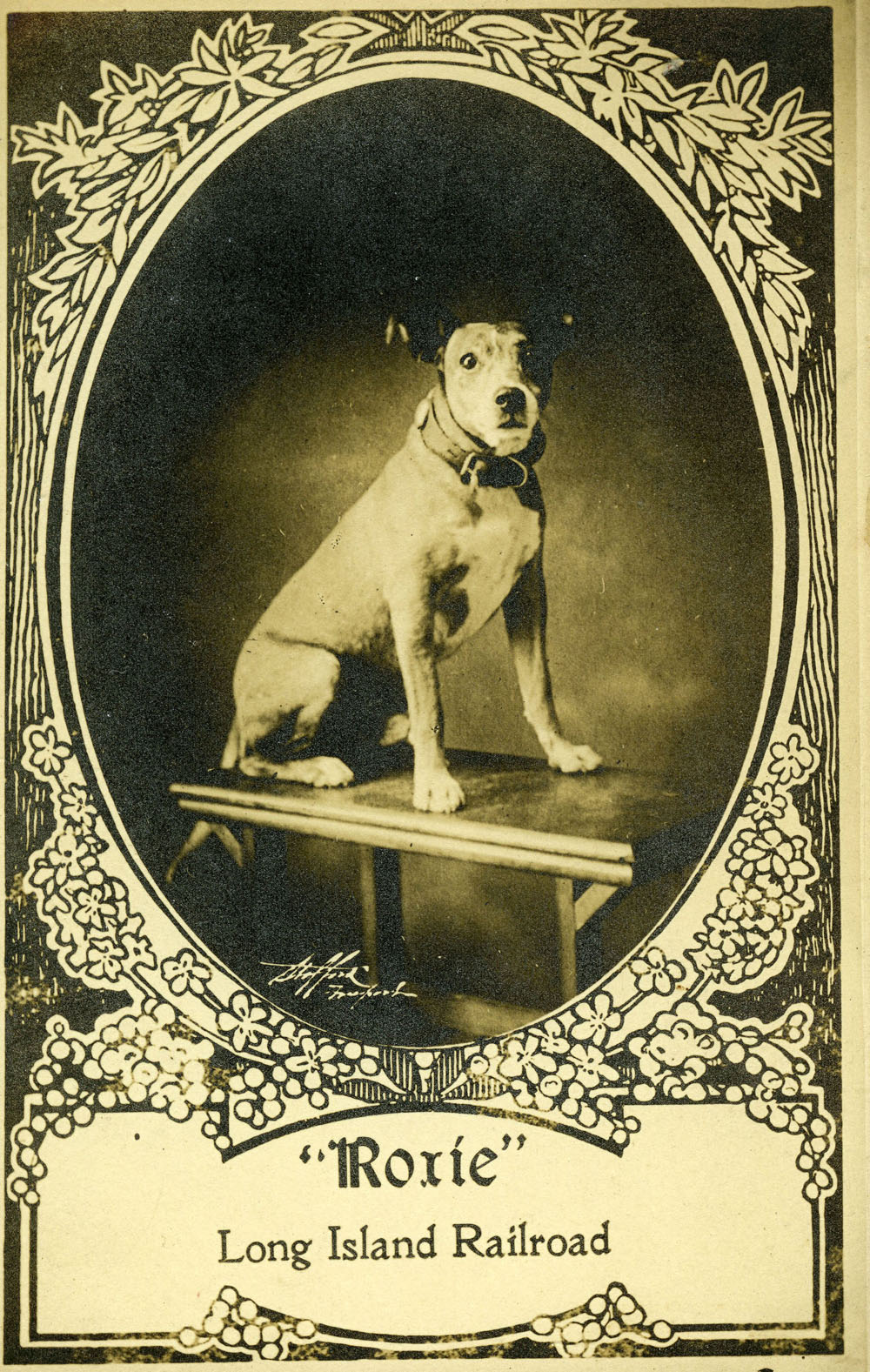
Worthington’s book served its purpose, telling the story of Roxey, the beloved railroad dog. Little did Worthington realize her book was the catalyst for a monumental creation. Artist Donald Lipski read Worthington’s book and loved Roxey’s story.
Lipski is a world-renowned artist who had produced numerous creations including the huge chandelier that is inside the Lexington Avenue entrance to New York’s Grand Central Terminal. The chandelier can be seen from the outside, below the Bronxville Eagle that once adorned the former Grand Central Station building — demolished in 1910 to create space for construction of the present building.
What’s Roxey’s story?
In 1901 a woman with a puppy got off a ferry boat in Long Island City. Somehow the puppy got lost and wondered onto a Long Island Rail Road passenger train. Upon the train reaching the Garden City depot, the puppy got off the train and was met by Station Agent Heaney, who took the puppy into the station. The agent named the puppy Roxey, and eventually the dog developed a routine of riding on the trains.
System-wide, railroad employees got to know Roxey. LIRR president Ralph Peters had a collar made for the dog with an engraved silver plate that read: “I am Roxey, the LIRR dog, whose dog are you?”
As the story goes, one day President Theodore Roosevelt boarded a private railroad car at Long Island City for his trip to his home in Oyster Bay. Roosevelt heard some commotion in the bedroom and when he entered, he saw the porter trying to get Roxey off the bed.
Roosevelt asked, “What is going on?” The porter replied, “This is Roxey, the railroad’s mascot. I’m trying to get him out of here.” To which Roosevelt replied, “That is okay, let the dog ride.” Roxey rode all the way to Oyster Bay station with the president.
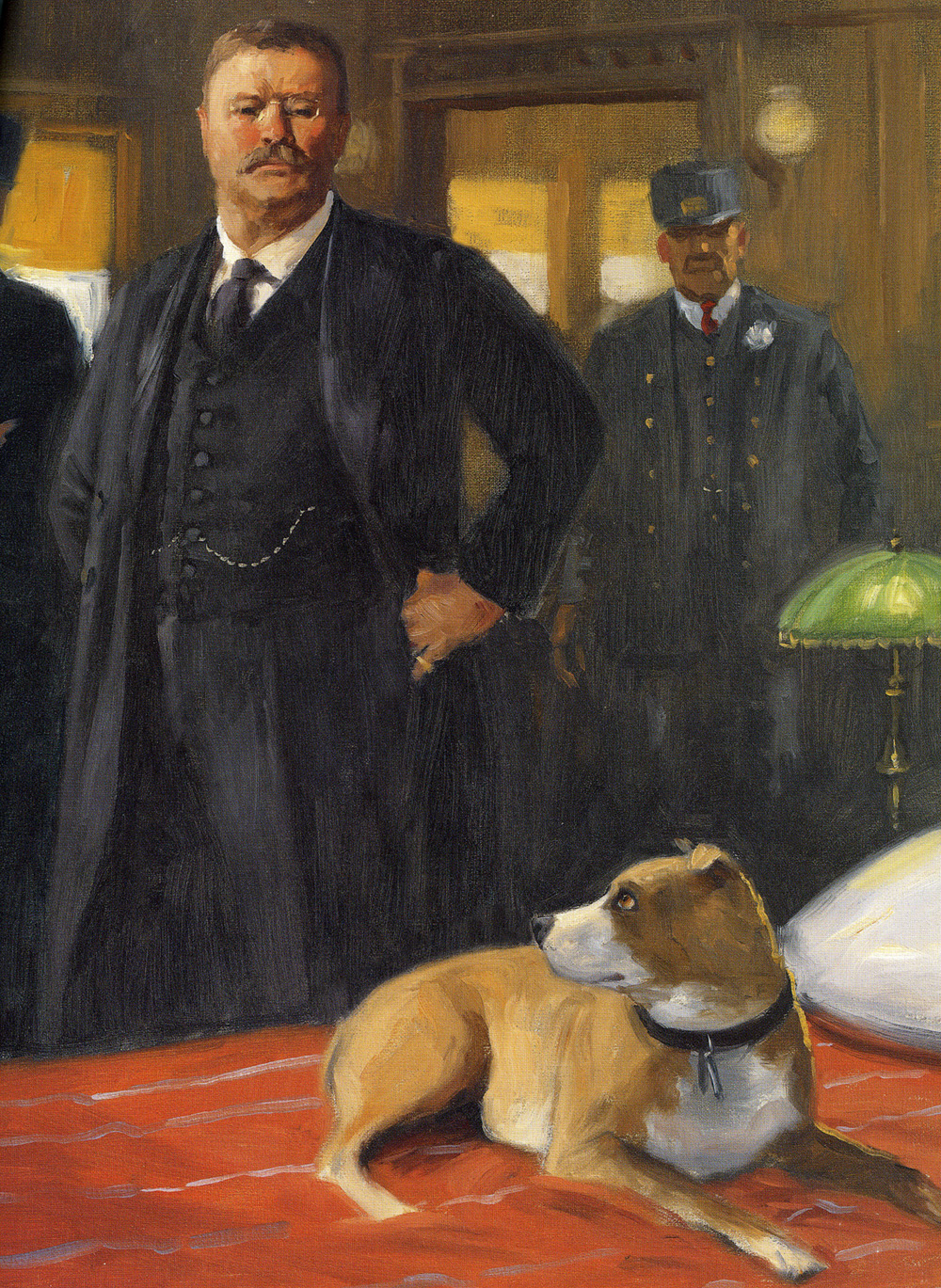
Merrick resident Elsie Hess became Roxey’s closest friend. After many years of riding trains (1901-1913) and enjoying friendships with LIRR employees, Roxey became ill and passed away at a veterinary facility in Jamaica, Queens (1914). Elsie Hess made a request to LIRR President Ralph Peters to allow Roxey to be buried near the railroad tracks at Merrick station. Her request was granted, and Roxey was laid to rest next to the passing trains that he so much loved. Railroad employees, along with Hess, funded the placement of a memorial stone at Roxey’s grave.
Upon the 1969 Merrick grade crossing elimination project, Roxey’s memorial stone was preserved and eventually placed near the new Merrick station building, at the northeast corner of Merrick Avenue and Sunrise Highway. That stone can still be seen today.
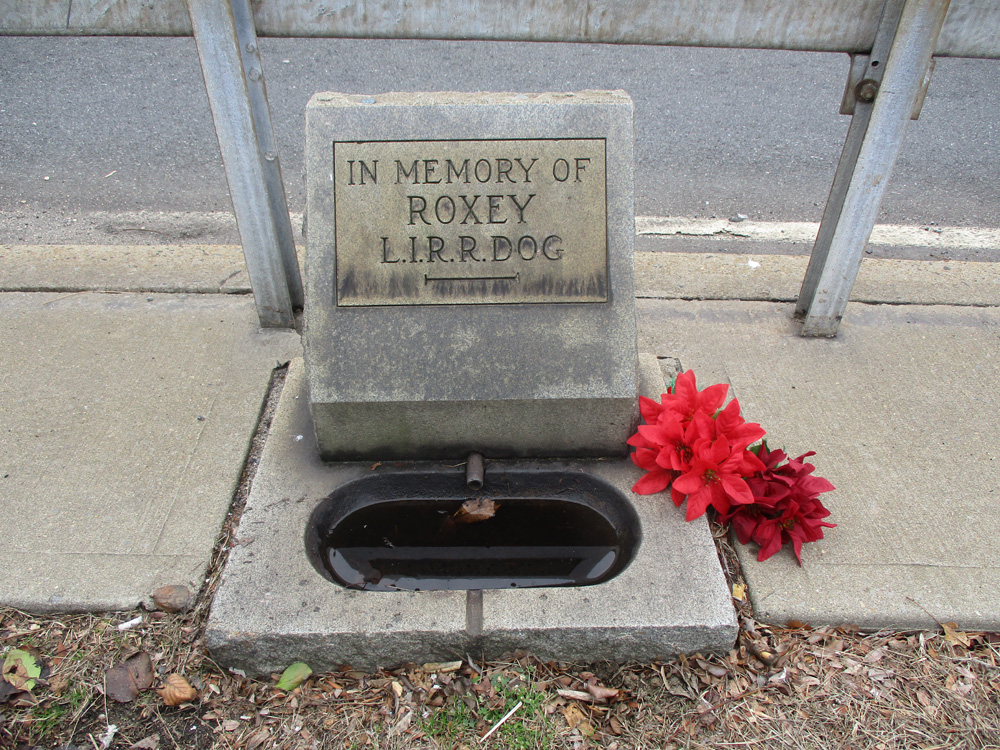
Lipski was commissioned by the Metropolitan Transportation Authority to create a sculpture for the Mineola station building marking the completion of the monumental Third Track Project. Mineola was chosen because it was there that three historic railroad structures were demolished to make room for the third track: the eastbound waiting room building, the brick electric substation No. 8, and the Nassau signal tower.
Inspiration strikes again
Inspired by Worthington’s book about the beloved railroad dog Roxey, Lipski thought about creating a sculpture of the dog. But how would Roxey be portrayed? In studying Mineola’s history, Lipski learned the town once had an airfield. Bessica Raiche made the first solo flight by a woman from this field on Sept. 16, 1910. Raiche, with the help of her husband, built her plane using bamboo and silk rather than the heavier wood and canvas employed by the Wright Brothers.
A plaque mounted on the southside of the Mineola station tells Raiche’s story. The message on that plaque reads, in part: “After receiving a diamond-studded gold medal from the Aeronautical Society of America inscribed ‘to the First Woman Aviator of America,’ Bessie and her husband started their own company in Mineola building planes and giving flying lessons. Her aviation career lasted a few more years before she moved to California to continue her previous career as a physician — one of the first American women to specialize in obstetrics and gynecology. She is remembered as a ‘new woman of the modern era’ who drove a car and practiced the sports of shooting and swimming. Bessie died of complications from heart disease in 1932.”
Lipski was quite moved by her intense motivation to build and fly an airplane. He learned that Raiche — swept away by her urge to fly — chose to relocate her home to Mineola because it was the center of early American aviation. Lipski thought that a statue combining Raiche with Roxey would withstand the test of time. This idea was similar to the statue that he designed for the Hassenfeld Children’s Hospital at New York University Langone, on the east side of midtown Manhattan.
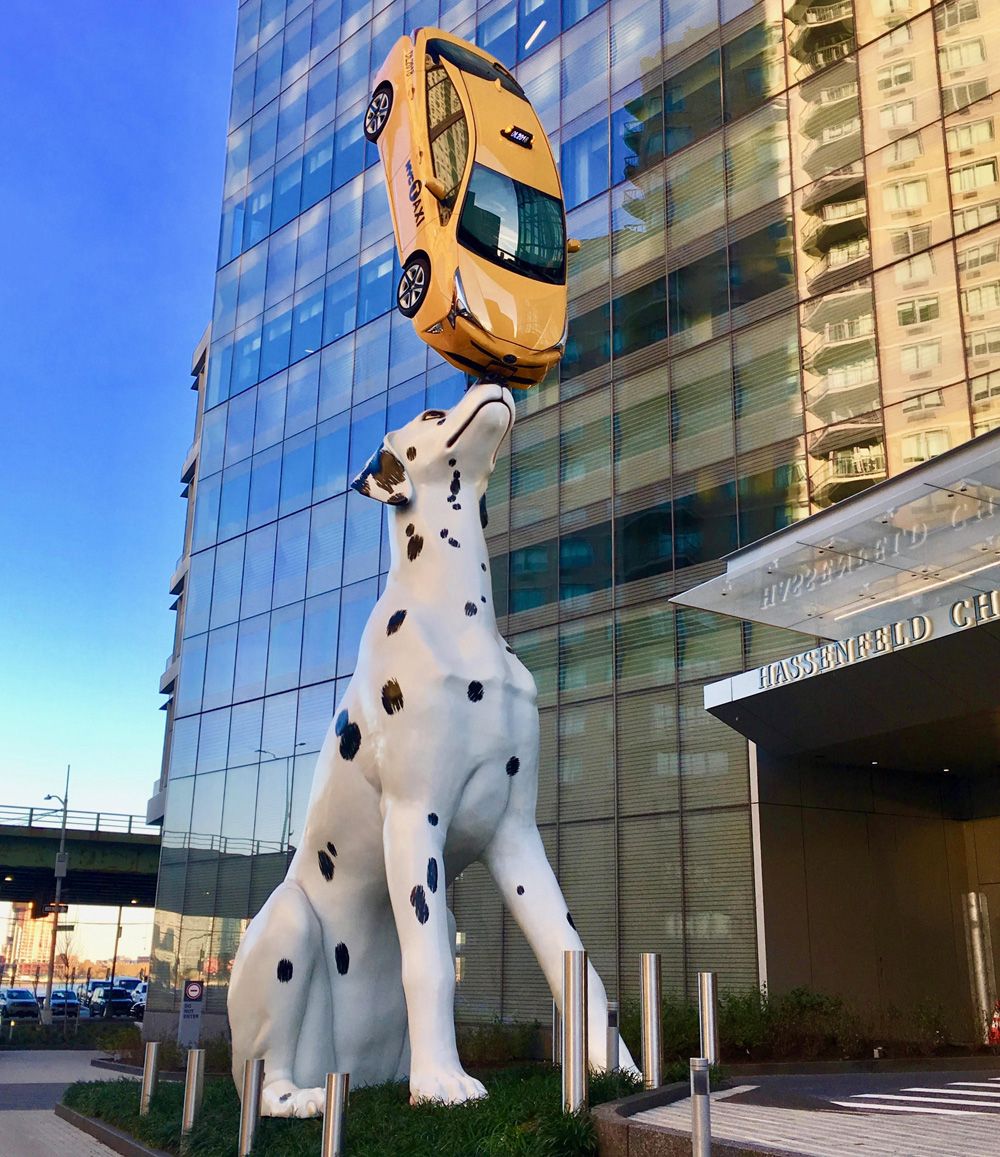
He thought such a statue would not be controversial and serve two purposes. It would honor both a female aviation pioneer and Long Island Rail Roaders. After all, Roxey and his railroad friends were intertwined and created a wonderful chapter in the history book of the 189-year-old Long Island Rail Road. Equally fitting was the fact that the statue was dedicated during the 100th anniversary year of the Mineola station. The statue was a marvelous way to cap the Third Track Project.
Forging ahead
Using illustrations in Worthington’s book, Lipski drew the artwork for Roxey. To draw the aviator, Lipski relied heavily on help from his wife Teri Hyland. According to Lipski, not only does his wife have the realistic drawing skills that he relied on to get the look of Bessie right, but she used to be a fashion and costume designer.
“ … Carefully researching what Bessie might wear at a time when certainly no one was making such gear for women and communicating this with Chris [sculptor Christopher Collins] was crucial,” says Lipski.
Lipski says he met Collins while living in Philadelphia. “He is an actual sculptor, like Michelangelo,” says Lipski. “I’ve mostly just taken objects and put them together. But when I found I needed an actual realistic sculptor who could help me and started using Chris, it was like magic.” The full-scale plaster models were created in Collins’ Glenside, Pa., studio.
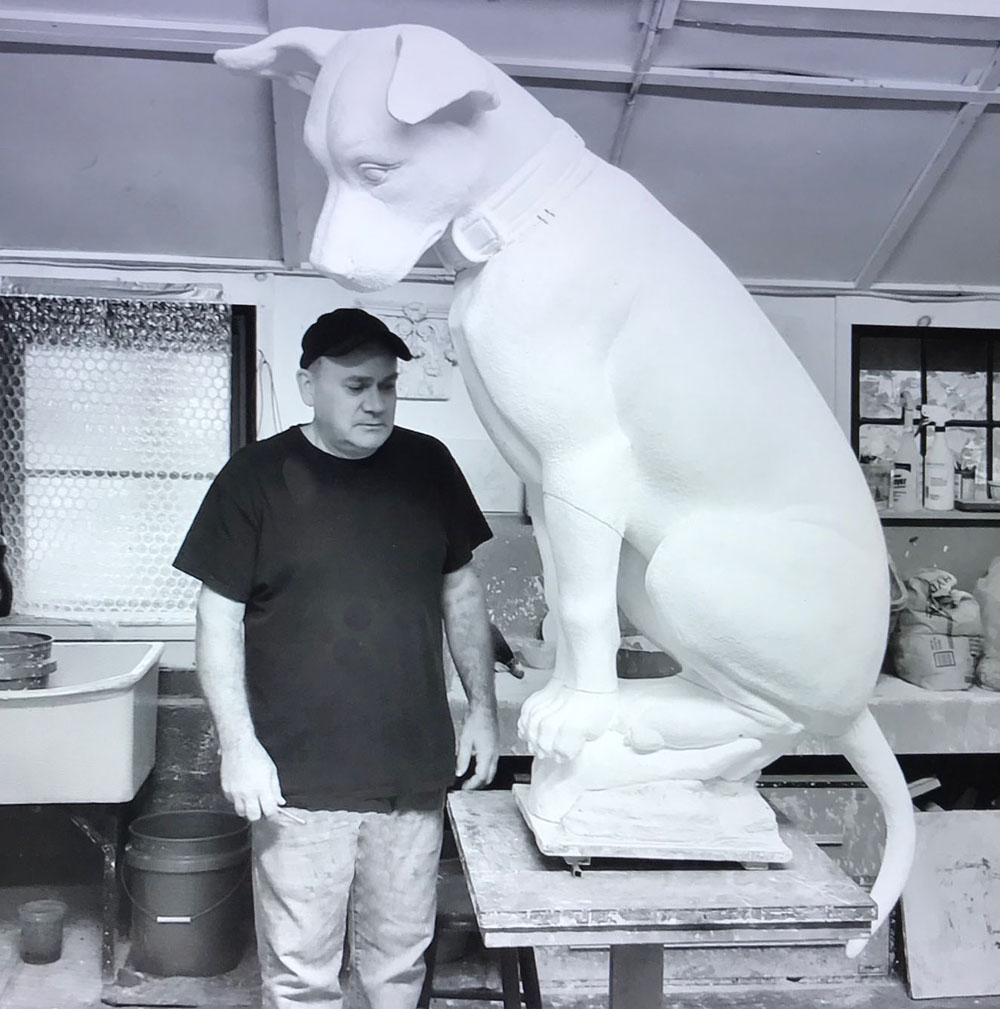
The plaster models were then sent to bronze statue fabricator Art Castings of Colorado, where Tony Workman and his team of artisans brought it to life. According to Lipski, his wife and Collins kept a close watch over every detail of this process.
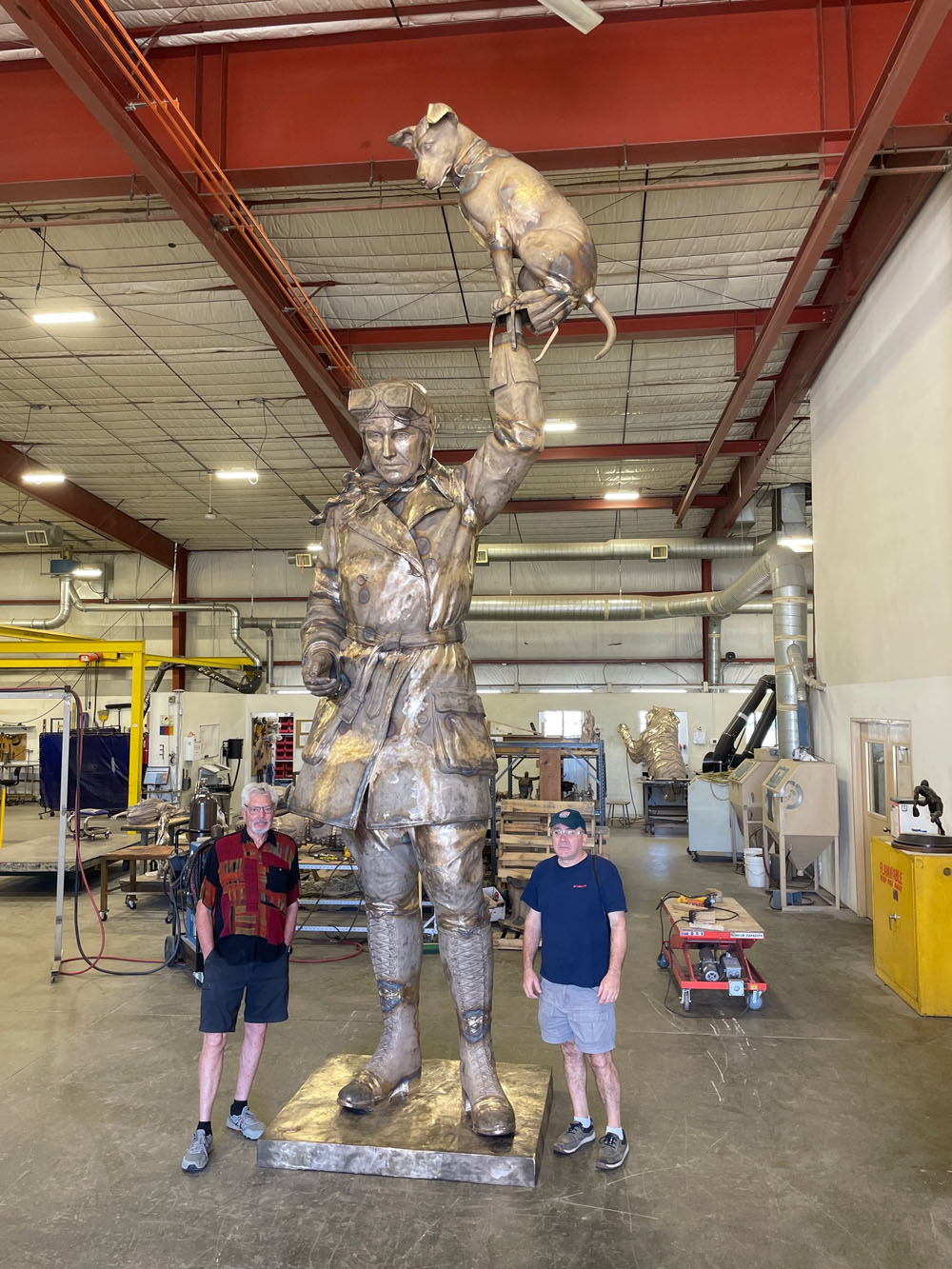
On Feb. 22, the statue was delivered to Mineola station on a flatbed tractor trailer truck. Bay Crane Co. dispatched a heavy-duty crane to lift the statue from the street, over the building canopy, and onto the 19,000-pound granite block upon which it would rest. The 2,400-pound statue was wrapped in shipping tarps, which were supposed to remain in place until the statue was dedicated on March 2, 2023.
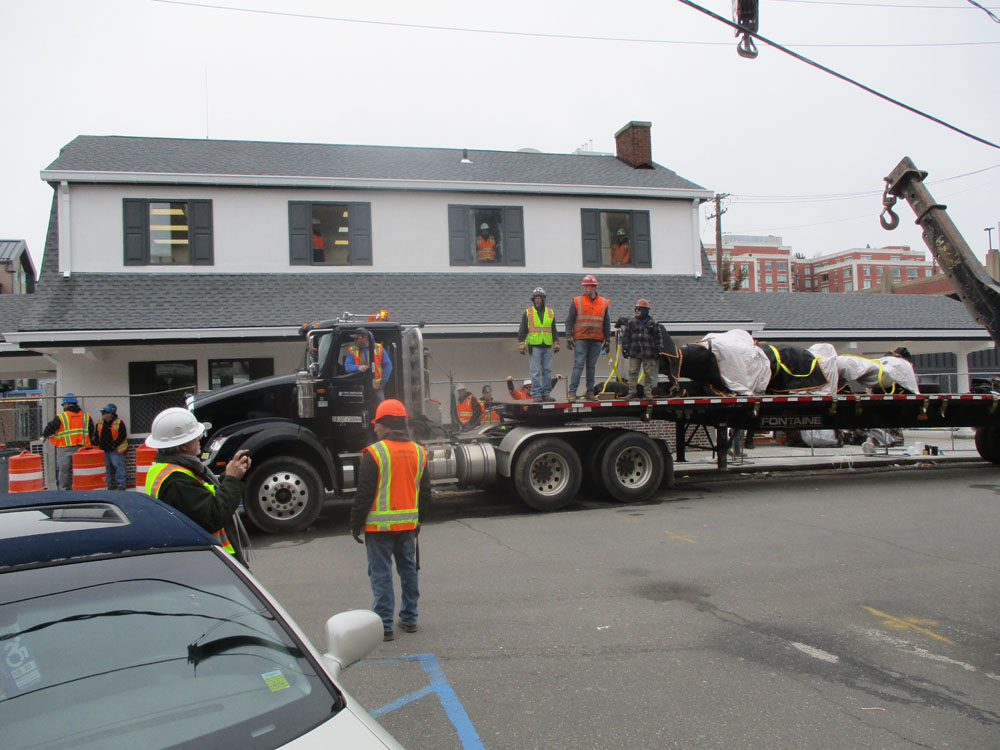
Due to complicating circumstances, however, the dedication ceremony had to be postponed, but the statue was unveiled by workers on March 1. It has remained on display to the public since then. A small plate on the granite base directs the curious to a larger plaque on the station building that offers a full explanation of the work.
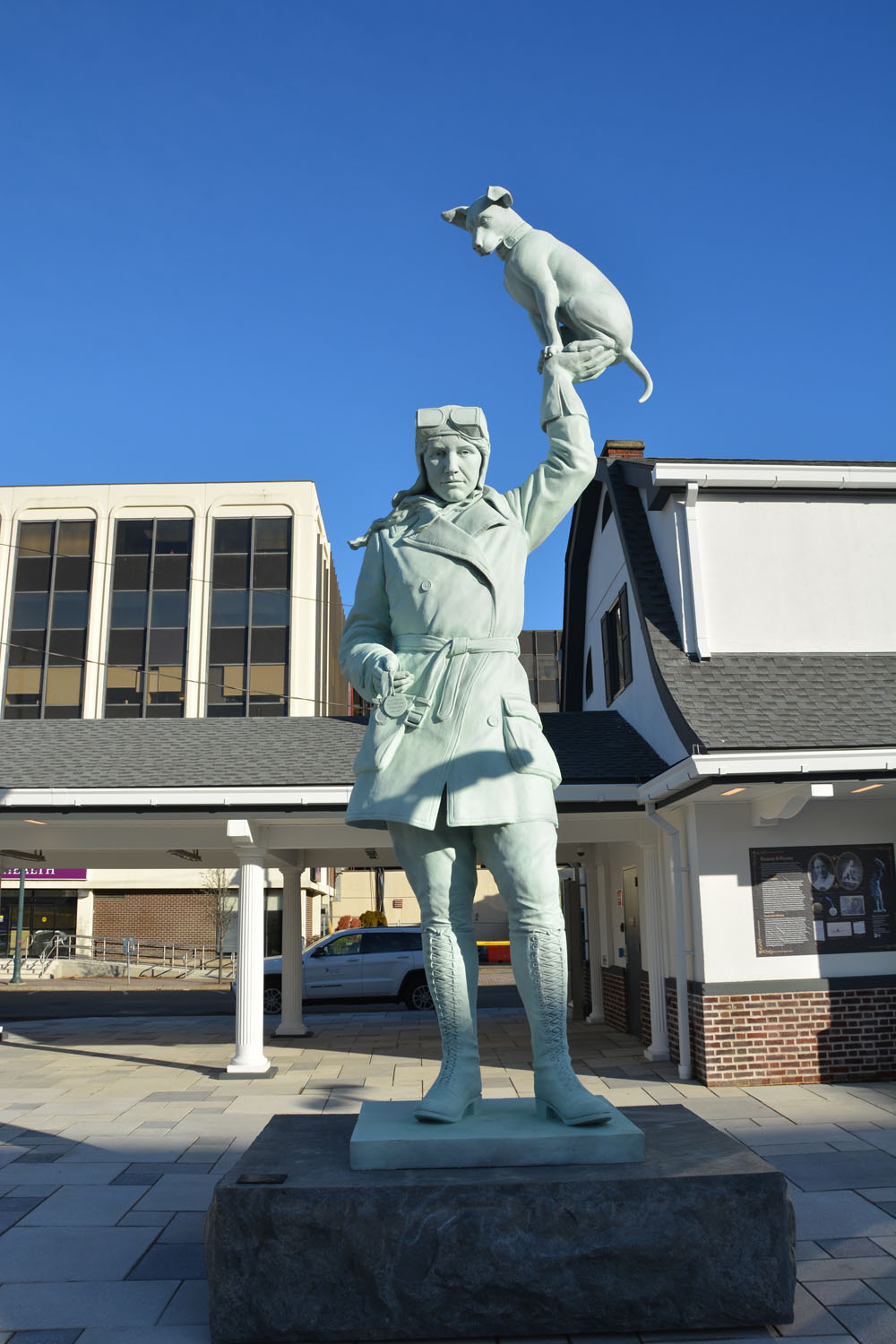
Lipski’s statue portrays a saga in local aviation history as well as a chapter in Long Island Rail Road history. The statue is a wonderful tribute to aviators and railroaders alike. Lipski’s sculpture should certainly withstand the test of time.
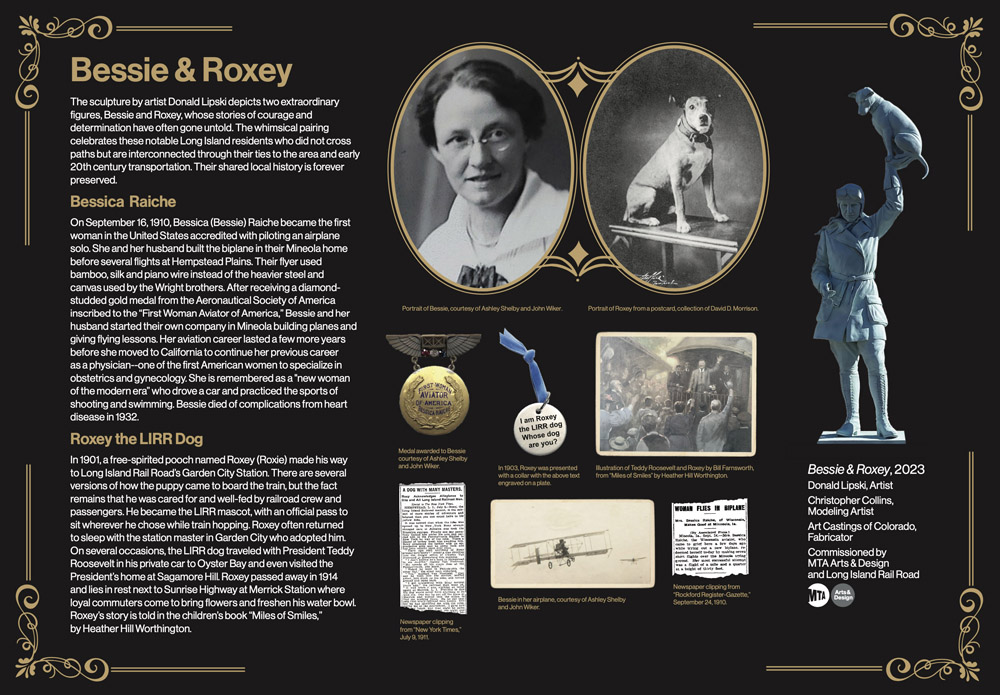














Two separate pieces of history should be commemorated by two separate sculptures. The Bessie statute should be in Mineola alone, since that is where she made her mark, While Roxie should have his statue in the Merrick station where he was burried. Combining the two makes no real sense. Did they ever interact with each other? If not, why do it this way?